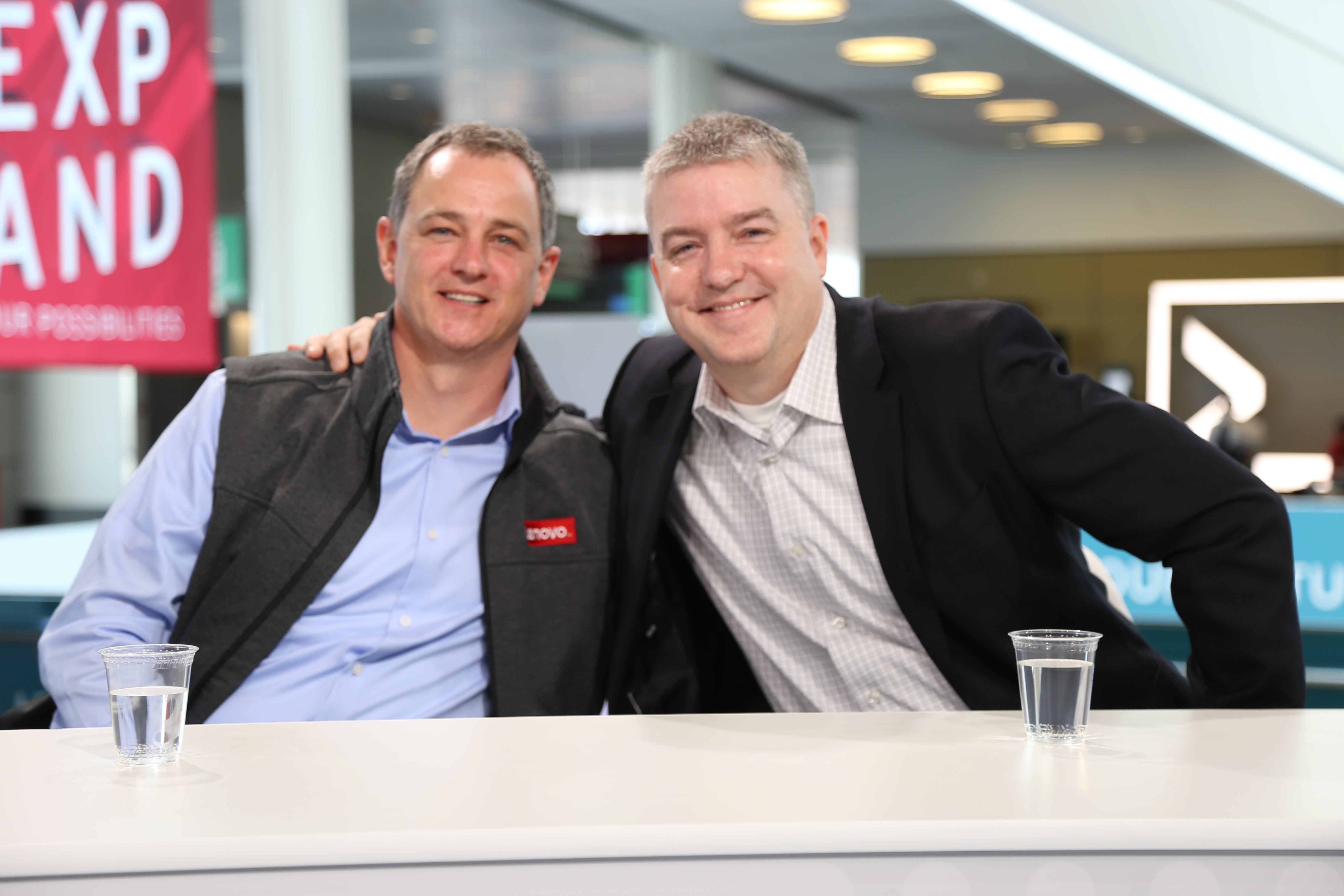 CLOUD
CLOUD
 CLOUD
CLOUD
 CLOUD
CLOUD
No longer do companies want to be managing their infrastructure; they just want to focus on their applications. This has pushed them to consider public cloud options even more. And while most information technology services are all about the application layer, Lenovo Group Ltd. has been building an infrastructure as a service solution called Lenovo TruScale Infrastructure Services, which allows companies to have an on-premises management platform similar to public cloud with a pay-as-you-go data center.
Eric Kern (pictured, right), executive distinguished engineer at Lenovo, and Steve Brown (pictured, left), managing partner of the software business unit at Lenovo, spoke with Stu Miniman (@stu) and John Walls (@JohnWalls21), co-hosts of theCUBE, SiliconANGLE Media’s mobile livestreaming studio, during the Red Hat Summit in Boston. They discussed Lenovo’s innovations around TruScale and other emerging ideas (see the full interview with transcript here). (* Disclosure below.)
[Editor’s note: The following has been condensed for clarity.]
Miniman: Talk about some of the solutions you’re talking to customers about — some of the latest and greatest.
Kern: One of the things we’ve been doing recently is around TruScale … our infrastructure as a service on-premise. So one of the things we do with it is we build overall solutions. Probably one of the neat novel things … is around, ‘How do we build a metering system that doesn’t require us to install a bunch of software and can be compatible with everything?’
So with TruScale, what we’ve done is we’ve leveraged what’s called our XClarity Controller — it’s the chip basically on the motherboard. And that XClarity Controller has the ability to measure power — and measure power both at the overall input consumption, as well measuring power in the CPU, the memory, and the I/O. And we built an infrastructure around that. We can actually tell you exactly what percentage the system is being used and consumed based on that, and we can charge for the overall system on a monthly basis.
Walls: So how does that affect the customer relationship?
Kern: Not only do they see exactly what they’re being charged for, they see exactly some of the usage on their own systems. A lot of times they don’t know how well-balanced or unbalanced their systems are, and so we’re actually providing real usage data. It’s different than what you get in public cloud. It’s different in what you get in other solutions where it’s virtual allocation. So there’s a difference in knowing the physical utilization versus the allocated utilization.
What … a lot of companies do when they’re renting public cloud infrastructure is they spend a lot of time in automation to actually deallocate. So they’re doing all this work just to try to save money. Whereas in the TruScale model, you just run it like you normally run it and you save money, because … if you’re not using it, you’re not paying for it.
Miniman: We used to think about, ‘What boxes am I buying; what am license I’m doing?’ If you talk about a real true software world, it should be a platform that unifies these things together. So it sounds like you’re saying we’re getting there.
Brown: Well, we’re not getting there. We’re there. What that allows us to do is to take the reference designs that we have and the testing that we’ve previously validated with Intel and Red Hat and be able to snap pieces together. So it’s just a matter of what’s different and unique for the client and the client’s situation and their growth pattern.
What’s great about TruScale is that in this model, we can predicatively analyze their consumption forward based on the business growth … so they can plan years in advance as they progress — and as such, the other snap-ins — say storage — that they’re gonna need for data in motion or data at rest. So it’s actually smarter. And what that ends up doing is obviously saving them money, but it saves them time.
The typical model is going back to IT and saying, ‘We need these severs, we need the storage and the software, and bolt it altogether.’ And the IT guys are hair on fire running around already. So they can, as long as IT approves it, they can sort of bypass that big, heavy lift.
Watch the complete video interview below, and be sure to check out more of SiliconANGLE’s and theCUBE’s coverage of Red Hat Summit 2019. (* Disclosure: TheCUBE is a paid media partner for Red Hat Summit. Neither Red Hat Inc., the sponsor for theCUBE’s event coverage, nor other sponsors have editorial control over content on theCUBE or SiliconANGLE.)
THANK YOU